#showy tick trefoil
Explore tagged Tumblr posts
Text





(1) (2) (3) (4) (5) by Holly Kilpatrick
#flowers#wild senna#wild bergamot#cow parsley#showy tick trefoil#mouse garlic#bittersweet nightshade
2 notes
·
View notes
Text
(3)7 days later

The common milkweed grew too tall for the starter tray and had to come out. 61% germination


Bladder campion was the first to sprout, but I think the heat mat is killing them or too much moisture. 39% germination with a mortality rate of 21%


One of MANY of the tiny daisy fleabane seeds that I thought was from a polyploid sprouted, but almost all of the MANY regular daisy fleabane sprouted and survived

Only 3% (1) of the sulfer cinquefoils germinated (hunch they need longer stratification) and is not doing too hot.


The buckwheat is thriving now with a 31% germination rate.

And the (store bought) rose milkweed surprised me with 44% germination just a little delayed compared to the common variety.
I took out the showy tick trefoil seeds I got to replace last years that I thought they send the wrong variety of (rotundifolium maybe, word is still out) to fill the tray back in, which will all sprout in a few days if they're anything like the last batch.
#germination#native plants#cold stratification#pure michigan#experiment#common milkweed#rose milkweed#milkweed#trefoil#showy tick trefoil#cinquefoil#sulfur cinquefoil#daisy fleabane#polyploid#curly dock#yellow dock#buckwheat#bladder campion#campion#heat mat#seed starting#research
1 note
·
View note
Text

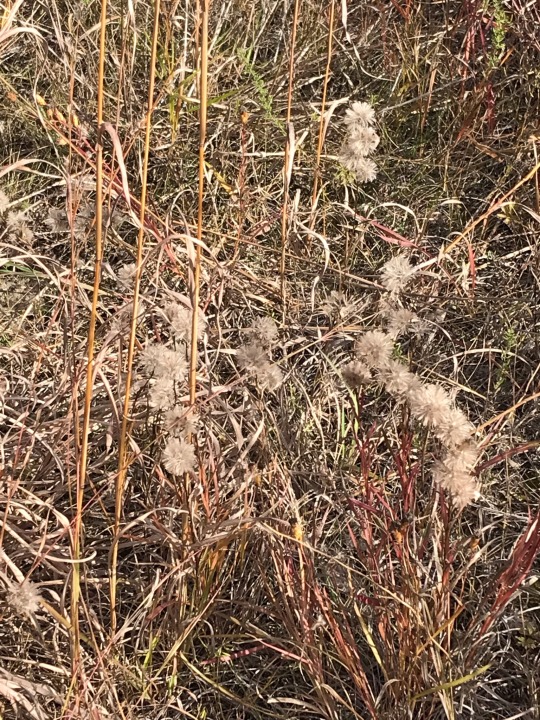

Met some cool tall grass prairie friends today doing seed collecting for a land trust: Canada wild rye, cylindrical blazing star, and little bluestem (with big bluestem in the background)
#personal#mine#ontario nature#seed collecting#tall grass prairie#I also accidentally collected about 143 showy tick trefoils seeds on my pants#ecology#enviro student shit
5 notes
·
View notes
Text
Plant native plants
What's up, northern hemisphere homies? Spring is coming and soon, many of you may be looking toward gardening. When you're deciding what to plant, I have two words for you to consider:
Native. Wildflowers.
There are huge benefits to planting native plants over store-bought plants.
Native plants are already adapted to the local soil. Lots of ornamental plants (especially lawn grass) pull nutrients out of the soil without giving anything back. Native plants are much better at supporting the nutrient cycle.
They are low-maintenance. Because native plants are already adapted to your local conditions, they need much less care and maintenance. You can save time and money on fertilizers, pesticides, herbicides, and water.
Native plants support the local ecosystem. The plants have evolved alongside with animals, meaning they feed local insects, birds, and other animals. They also provide shelter for wildlife, attract pollinators, and boost the local animal populations.
They increase biodiversity. In my country, huge swaths of native land have been bulldozed and replaced with ecologically damaging farmland, lawns, and non-native ornamental plants. By planting natives you help restore the ecological balance and can get an idea of what the land used to look like. Planting natives on your property can spread the seeds to other locations through wind or animal dispersal.
They are sustainable. You can harvest seeds off of your natives and grow your garden, give them to other people, or scatter them in the wild.
They are diverse and unique. How many gardens are full of the same old standards like peonies, daffodils, and tulips? Native plants often look much more unique and interesting than the same old ornamentals. Here are some local species from my area that I think are much better looking than a lot of ornamental cultivars. (top to bottom: prairie blazing star, showy tick trefoil, Virginia bluebell, dutchman's britches, bottle gentian).



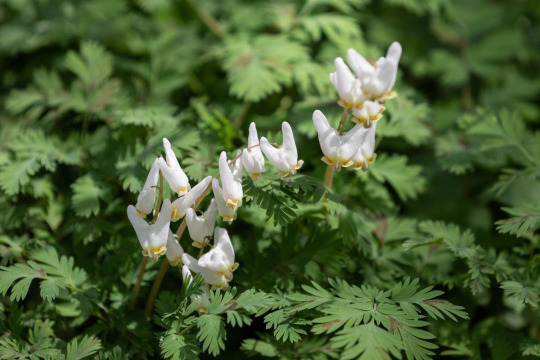
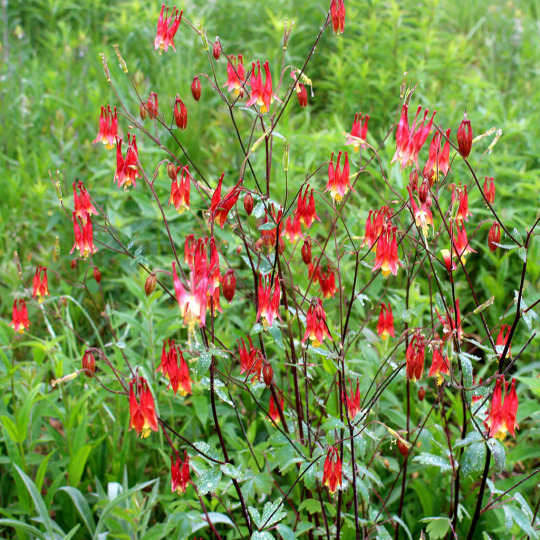

Do some research about which species are local to your area and see if your local garden stores have any native species. A lot of places will have naturalist groups who will sell native plants or their seeds or can point you to places you can get them. You may be able to harvest seeds directly off the plant if there are natural areas near you. However if you are harvesting natural plants, check local laws and see who owns the property. The general rule of thumb is that for abundant native species, you can safely harvest about half of the seeds without impacting the regrowth next year. For rarer species, you shouldn't take more than a quarter. If a lot of people are harvesting in the same area, they may be taking too much.
165 notes
·
View notes
Text
My Garden Flowers Part 4
All photos mine. The Pennsylvania pellitory is edited for because the plant app I took the photo in washed it out. The scarlet bee balm is edited for colour because that old phone's camera sucked.























In order of appearance:
091. Pennsylvania Pellitory (Parietaria pensylvanica) A common garden weed, but as it's native it can stay in some places.
092. Perennial Flax (Linum perenne) In spite of the name she sadly didn't come back or reseed. Shame because she looked really nice in that area. Oh well. I'll have to try in another spot.
093. Showy Tick-Trefoil (Desmodium canadense) She tricked me! I thought she hadn't made it as she hadn't come up by late June so I got another one and put her in a different area...only for this one to come up. And if you're thinking, oh, she's just a late bloomer, I should have waited, well, she came up in May this year. Because of course she did.
094. Virginia Mountain Mint (Pycnanthemum virginiana) She smells like something you'd want to season steak or something with and would probably do very well at that but I've never cooked a steak before. Maybe I'll try her in pesto some day.
095. Devil's Tongue (Opuntia humifusa) She flowered for the first time last year and is flowering again this year!
096. Fragile Prickly Pear (Opuntia fragilis) Not pictured as she hasn't flowered yet. She's still quite little. I might break off a piece of her to try growing in that really tough spot. If she can survive summer to winter in a pot, surely that area shouldn't be too harsh for her.
097. Thrift Seapink (Armeria maritima) She's tough enough to survive winter in a pot and did so for three years, but last winter was apparently too much for her. Again, I think it was just too dry. She was pretty much only happy there in the spring and fall, though, so maybe it's just as well. The new one I planted elsewhere seems happy in all seasons.
098-099. Lance-Leaved Tickseed (Coreopsis lanceolata) Usually only the cultivars have those red markings! I'm assuming there's been some cross-pollination with other gardens because I did not plant that. My tickseeds are all straight amber. Unless she independently produced the colour on her own as a sport. Interestingly enough, none of them are showing that colouration this year.
100. White Sagewort (Artemisia ludoviciana) I wasn't actually supposed to have this one. I'd ordered the less aggressive A. frigida, but oh well. Maybe she'll attract American lady butterflies some year. Not pictured as she hasn't flowered yet. She smells like something you'd use to season stuffing.
101. Blue-Eyed Grass (Sisyrinchium angustifolium) After several attempts in different areas, trying my hardest to follow what the information online said she would need, but somehow failing, this one at last seems to be doing fine.
102. Dotted St. John's Wort (Hypericum punctata) I didn't plant that. Either a gift of the wildlife or a dormant seed came to life when I removed the grass.
103. Roundhead Bushclover (Lespedeza capitata) Another one I've had several attempts with, but she seems to like it there.
104. Curlycup Gumweed (Grindelia squarrosa) Flowered nicely that year and I thought she didn't reseed because she didn't come up last year but there is a plant this year! It's good to remember that seeds can lie dormant for some time. :)
105. Upright Prairie Coneflower "Mexican Hat" (Ratibida columnifera) This is a cultivar and has since passed away during the winter.
106. Rocky Mountains Bee Plant (Cleomella serrulata) She reseeded for several years but apparently not this one. Hopefully they're just skipping a year and will come up next spring. If not I'll have to attempt a different area. Anyway, pretty much the whole plant is edible with preparation, and lots of insects love the flowers.
107. Spotted Horsemint (Monarda punctata) Beloved of many insects. Sometimes I just like to sit next to her and watch the activity.
108. Wild Black Sweet Tomato (Solanum ptychanthum) She began as a weed on this property, but not anymore. She is a welcome part of my native garden with her wonderful fruits in the summer.
109. Common Sunflower (Helianthus annuus) The wild type this time, but no evidence of reseeding this year. :(
110. Alpine Rock Cress (Arabis alpina) She flowers in April before most trees have even blossomed.
111. Field Chickweed (Cerastium arvense) By the time I got to plant her in the fall some years ago, I was sure she'd die over the winter. She didn't but struggled through the warm months. But she managed to bounce back the following spring and makes a nice little carpet now.
112. Yellow Wild Indigo (Baptisia tinctoria) Not pictured as she hasn't flowered yet.
113. Butterflyweed (Asclepias tuberosa) Finally decided to flower this year! She is the only orange species of milkweed native this far north.
114. Upright Prairie Coneflower (Ratibida columnifera) The wild type. Didn't like that spot in the winter either, so I'm trying a different area this year.
115. Fringed Blue Aster (Symphyotrichum ciliolatum) Not the most colourful or compact, but makes a nice spray of pale blue violet over her dark green foliage.
116. Bluestem Goldenrod (Solidago caesia) Not pictured as she hasn't flowered yet, but she's likely to this year.
117. Black Walnut (Juglans nigra) She's been on the property long before I got here. Not pictured as I haven't gotten any pictures yet since she is very tall.
118. Field Pussytoes (Antennaria neglecta) Compact and low-growing foliage create a mat, with these delicate stems poking out with what looks like kitten toes that pass for the plant's flower.
119. Aster (Symphyotrichum) I don't know what she is yet, but she decided to take up residence with my pussytoes and I guess that's okay. Haven't gotten pictures of the flowers yet.
120. Dotted Blazing Star (Liatris punctata) Not pictured as she hasn't flowered yet.
#blackswallowtailbutterfly#my photos#photography#my garden#garden flowers#native plant gardening#Parietaria pensylvanica#Linum perenne#Desmodium canadense#Pycnanthemum virginiana#Opuntia humifusa#Armeria maritima#Coreopsis lanceolata#Sisyrinchium angustifolium#Hypericum punctata#Lespedeza capitata#Grindelia squarrosa#Ratibida columnifera#Symphyotrichum ciliolatum#Antennaria neglecta
8 notes
·
View notes
Text
Introduction For the past decades, there has been a massive increase of the numbers of visitors visiting High Park. I must admit that my experience in High Park created a strong platform for me to appreciate nature and its wide range of species. This park is found in a hilly landscape and it is well-known for its natural park, sporting facilities, the zoo, playgrounds, education facilities, and cultural facilities. Since its establishment, the park has ranked the largest within Toronto city. While in the park, I found out that the park is the home to various wildlife species that to date attracts millions of visitors across the globe. This report provides a detailed description of the habitat I explored, the plants I saw, and the supplementary information I researched about the plants’ features. I had an amazing opportunity to watch the rare Black Oak Savannah habitat. About a third of the park environment consists of rare oak savannah with an open landscape. Most experts believe that the Oak savannah at this park is continentally significant because of its nature, size, and features of the remnant ecosystem (High Park Toronto, 2013). This research shows that, the black oak savannah of the High Park is considered significant because of its virtue of location and different plants that are unique and rare to find. For over 150 years, the Black Oak Savannah habitat has been an outstanding environment for different types of wildlife. This is because Oak trees have nesting sites for insects and birds and its acorns are the excellent food for wild turkey, deer, rodents, and other species. The parks department has implemented programs of acorn collection to attract a wide number of visitors who have a passion for such collection. The species I found in High Park are rare and unique to find in a park such as cup-plant and wild lupine. The low-nutrient and dry conditions of the Black Oak savannah of High Park supports the growing conditions of various plants such as Indian grass, little bluestem, and big bluestem whose binominal name is Prairie grasses. Additionally, it attracts prairie flowers such like wild lupine, showy tick-trefoil, and cylindrical blazing star. After a thorough investigation, I found out that there are various species that bloom well between the month of June and July such as rockrose, wild lupine, and New Jersey tea. There are other species that blossom well in the mid and late summer such as sunflower and bean family. At the High Park, there are notable wetland plant species such as sweet flag categorized as Acorus Calamus, blue-flag iris categorized as Iris Versicolor, and common arrowhead classified as Sagittaria latifolia. I must admit that High Park is the ideal place for visitors who love nature and ecology system. In essence, the park has different plants, trees, and flowers that capture many people’s attention. The place is so appealing in that one can pick a new favourite tree or flower each time he visits the park. The following section discusses some plants I found in the park plus their characteristics. Butterfly Weed (Asclepias tuberose) Butterfly weed also known as Pleurisy root is a native plant categorized in the class of tall grass prairies. This plant is the most attracting plant around that attracts many butterflies. The plant grows well in well and strong drained type of soil. In the park, the plant tolerates clay to sand soil and grows well in full sun and Read the full article
0 notes
Text
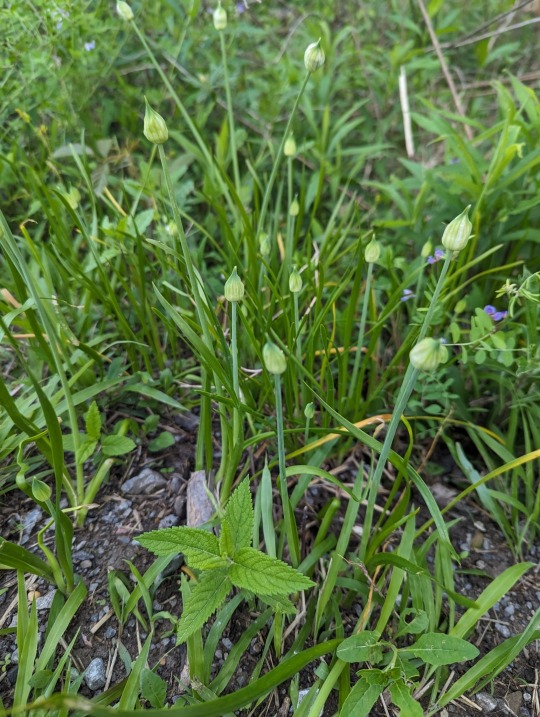
Canadian Meadow Garlic (Allium canadense), a LIAR, by Caleb Catto

Canadian Flat-backed Millipede (Psuedopolydesmus canadensis) by Theo Rickert

Smooth Blackberry (Rubus canadensis) by Todd Boland

Showy Tick-Trefoil (Desmodium canadense), a LIAR, by Sandy Wolkenberg

Moonseed (Menispermum canadense), a LIAR, by Mark Richman

Canadian Owlet (Calyptra canadensis) by Louis Imbeau
i didnt have an image ready so that's why that's just text. but fucking love [x] canadensis gotta be one of my favorite genders
6 notes
·
View notes
Photo

Showy Tick Trefoil (Desmodium canadense)
Shea Prairie, WI, 7-2-17
#showy tick trefoil#desmodium canadense#flower#wildlflower#imiging#original photographers#photographers on tumblr#nature photography
7 notes
·
View notes
Photo

Showy tick-trefoil (Desmodium canadense), also known as Canadian tick-trefoil, is a beautiful native legume with colorful, pea-like flowers. Like other members of the pea family, this plant is extremely valuable to wildlife, serving as a larval host plant for several butterfly species and a food source for game birds, such as bobwhite quail, ruffed grouse, and wild turkey. The plant’s sticky seed pods, known as loments, are covered in fine, hooked hairs that attach to clothing and fur, an adaptation that aids in their dispersal. Photo taken at Coopers Rock State Forest.
#appalachia#vandalia#west virginia#flora#summer#wildflowers#legume#fabaceae#desmodium#showy tick-trefoil#canadian tick-trefoil#coopers rock state forest
16 notes
·
View notes
Photo



More Riparian boundary shots, from Friendship Indiana. Unspoiled floodplain with tons of legitimate diversity .
The openings to erosive cut banks contained swamp milkweed, aquatic milkweed(which we don’t see much in Ohio unless its planted), Lance-leaf Frog Fruit, Fringed Wild Petunia, Allegheny Monkey Flower, Yellow Jewel weed and spotted, Fringed loose-strife, and Running Phlox.
From the back bank to this erosive cut bank remains the taller riparian species, alternate leaf wingstem, tall joe pye, tall ironweed, woodland sunflower, riparian and fox grape, cup plant, Running phlox, white bee balm, red bee balm, bubble gum pink bee balm(Monarda fistulosa), showy tick trefoil, ground nut, hoary tick trefoil, big blue stem, common boneset, yellow sneezeweed, ten-petaled sunflower, green headed coneflower, and eastern rose mallow.
27 notes
·
View notes
Photo

The showy tick trefoil (Desmodium canadense) from my 2014 Encyclo Sho mix finally bloomed. What a lovely legume.
2 notes
·
View notes
Text
I got showy tick trefoils from a different source this year, my peat pods are still on the way or I'd be talking garden stuff already thank god it's almost spring lol
I'm putting like 200 planted pods into the fridge for stratification the second they get here.
From plants that were growing wild, I'm planting:
2 different species of Avens (White & Yellow), Bladder Campion, Burdock, Catnip, Daisy Fleabane, False Strawberry, Moth Mullein, Mullein, Yellow Dock, Queen Anne's Lace, Sulfur Cinquefoil, Common Milkweed, and Wood Sorrel (Oxalis)
- to learn if/how long to chill them and how to grow them myself.
From last year I'll HOPEFULLY have:
Bee Balm, Butterfly Milkweed, Milfoils, Mountain Mint, Paw Paws, Rose Mallows, Swamp Milkweed, Round Leaf Trefoil, Showy Tick Trefoil, Tree Spinach, Wild Columbine, Wild Geranium, and Wild Ginger.
Trying again from seed:
Boneset, Blazingstar (Marsh and Button), Joe Pyes, Lady Leek, Turtleheads, and Wild Strawberry.
🌈🌱
3 notes
·
View notes
Text

#showy tick trefoil#gardening#gardeners on tumblr#gardencore#cottagecore#pink flowers#summer#native plants
19 notes
·
View notes
Text
Native wildflowers collection pt 2
Continued from part 1
Wild white indigo. These grow seed pods and then break off and tumbleweed around to spread their seeds.

Blazing star. There are several species of this and I think this one is prairie blazing star

Culver's root

Daisy fleabane. This was burned and the ashes were used as a flea remedy.

Joe Pye weed

Elderberry. You can chop up the branches of this, put them in the ground, and as long as there's enough water, they will grow into new bushes.

Wild petunia (left), wild geranium (right), and wild hyacinth (bottom). I like them more than the ornamental cultivars



Showy tick trefoil. These seeds are easy to collect. Walk through the prairie for a while and you'll have a few hundred stuck to your clothes.

Tall bellflower

Heal-all

New England aster or aromatic aster. I don't know how to tell them apart. Usually purple, but sometimes you find a bright pink one.


Evening primrose

Wild onion

American bush clover

Rose mallow (left) and halberd-leafed rose mallow (left). The latter gets smaller flowers and different shaped leaves.


Tall boneflower, which is a name I'm totally using for an undead plant in D&D

Great blue lobelia

Smartweed. These are absolutely tiny.

Spring beauty, a cute little spring ephemeral

Bloodroot. These are cool, they have giant rhizomes and bright red sap.

Wild violet. These are usually purple, but sometimes you find a yellow one

Trout lily.

Virginia bluebell

Trillium. You don't get as many of these around here as we'd like because the deer go absolutely wild for them

Woodland phlox

Wild hawthorn

Continued in part 3
#plants#native plants#wildflowers#native wildflowers#wild white indigo#blazing star#culver's root#daisy fleabane#petunia#geranium#hyacinth#tick trefoil#bellflower#heal all#asters#wild onion#primrose#rose mallow#boneflower#lobelia#smartweed#spring beauty#bloodroot#violets#trout lily#bluebells#trillium#phlox#hawthorn
5 notes
·
View notes
Text
More flowers from my garden!

Desmodium canadense (showy tick trefoil)
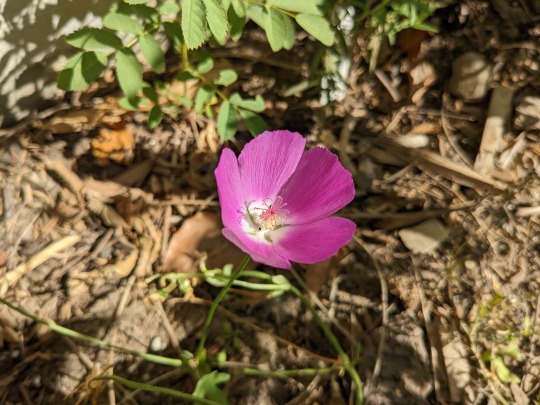
Callirhoe involucrata (purple poppymallow)

Pycnanthemum virginianum (Virginia mountain mint)
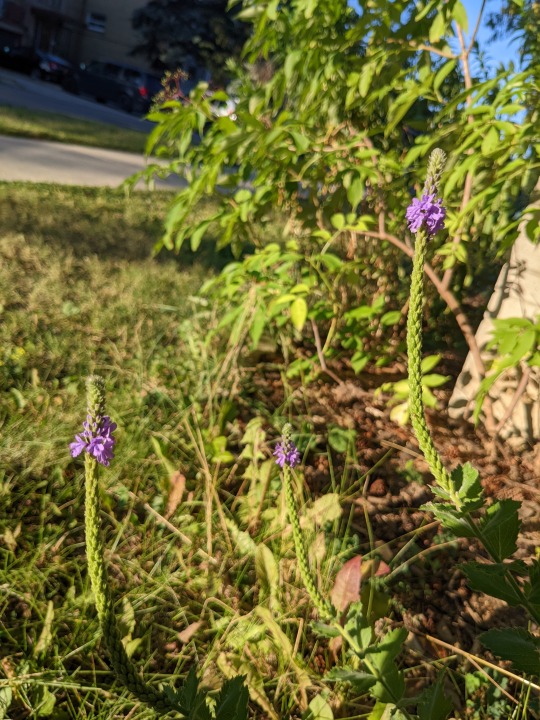
Verbena stricta (hoary vervain)

Eupatorium purpureum (sweet joe-pye-weed)

Monarda punctata (spotted beebalm)
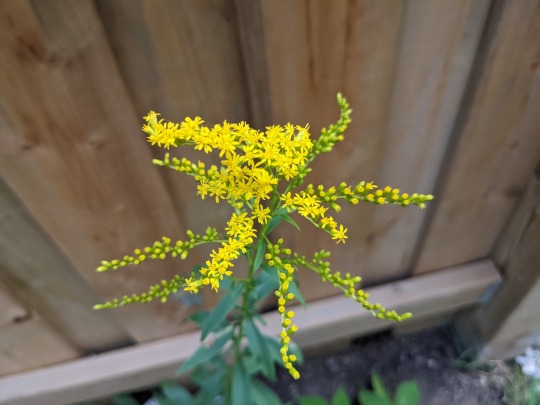
Solidago juncea (early goldenrod)
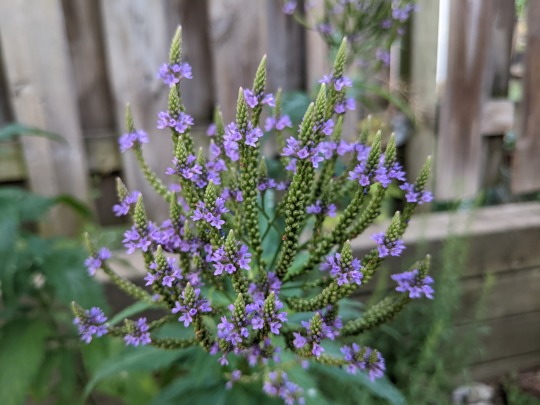
Verbena hastata (blue vervain)
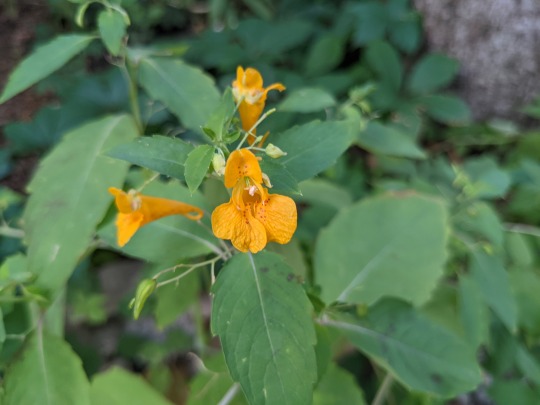
Impatiens capensis (spotted jewelweed)

Helianthus nuttallii (common tall sunflower)

Symphyotrichum ciliatum (fringed blue aster)
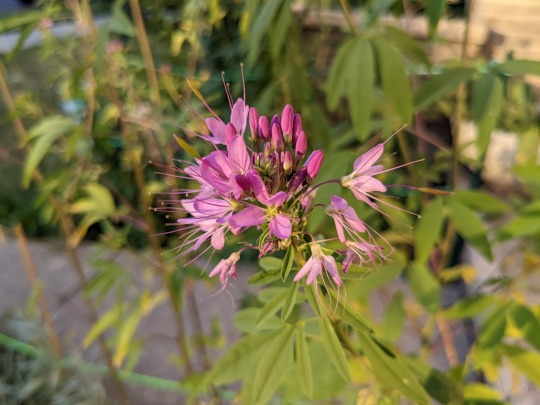
Cleome serrulata (Rocky Mountains bee plant)
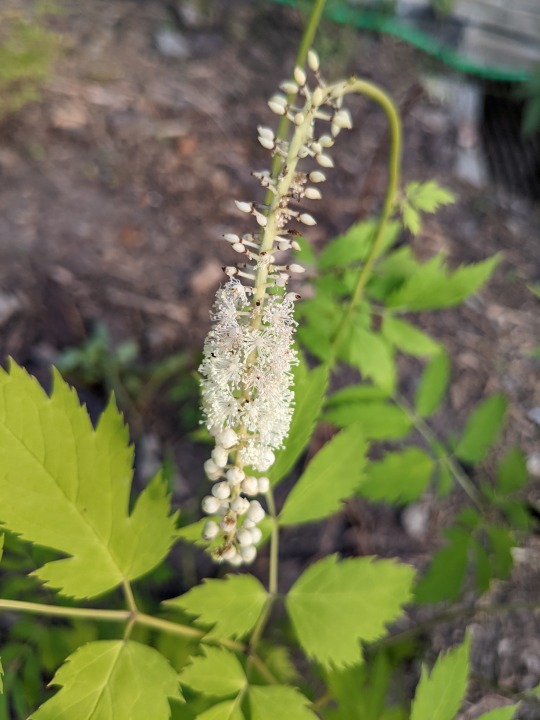
Actaea racemosa (black snakeroot)

Helianthus pauciflorus (stiff sunflower)
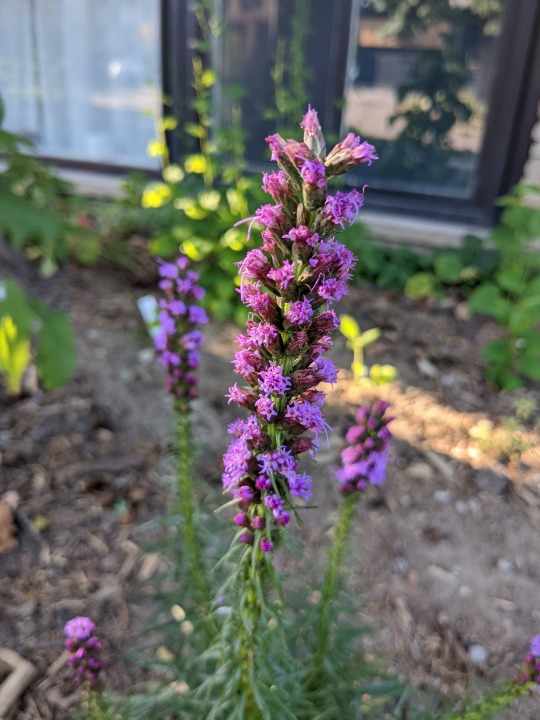
Liatris spicata (dense blazing star)

Hypericum punctatum (spotted St. John's wort)
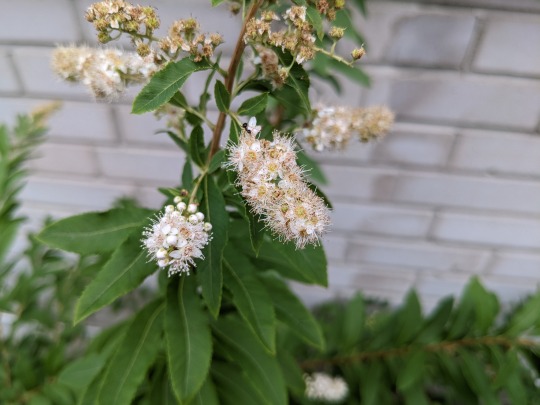
Spiraea alba (meadowsweet)
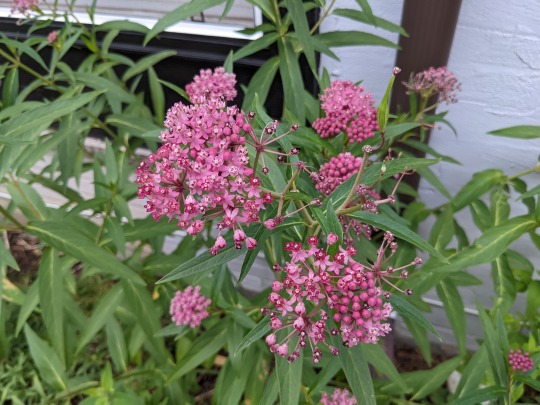
Asclepias incarnata (swamp milkweed)

Agastache foeniculum (anise hyssop)
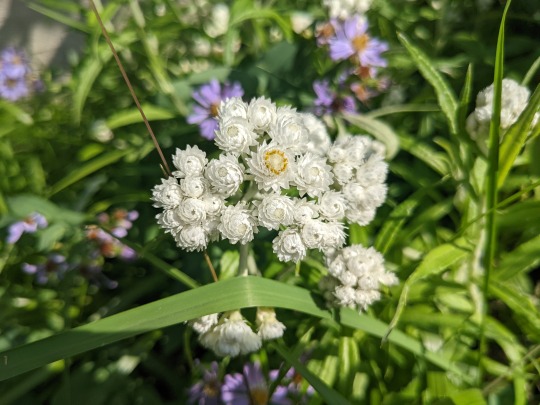
Anaphalis margaritacea (pearly everlasting)

Symphyotrichum laeve (smooth aster)
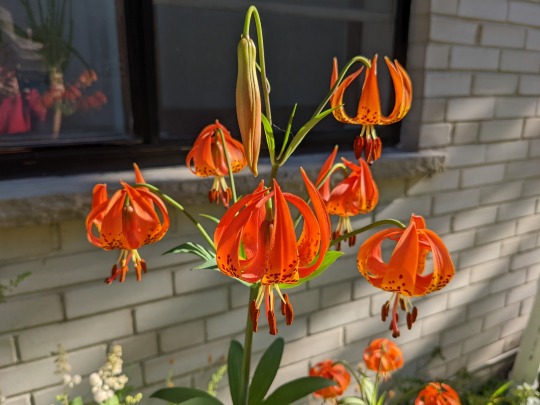
Lilium michiganense (Michigan lily)
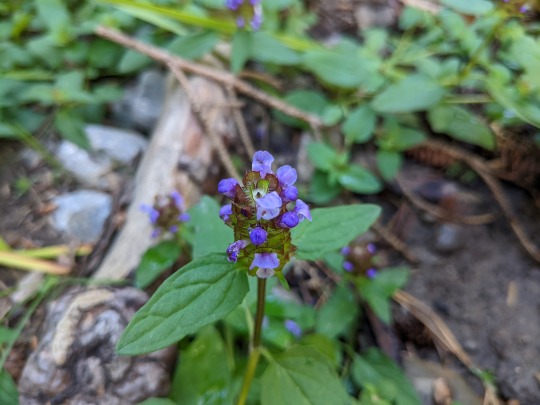
Prunella vulgaris ssp. vulgaris (common selfheal)

Symphyotrichum lanceolate (panicled aster)

Astragalus canadensis (Canada milk vetch)

Campanulastrum americanum (marsh harebell)

Sambucus canadensis (common elderberry)

Mertensia paniculata (tall bluebells)
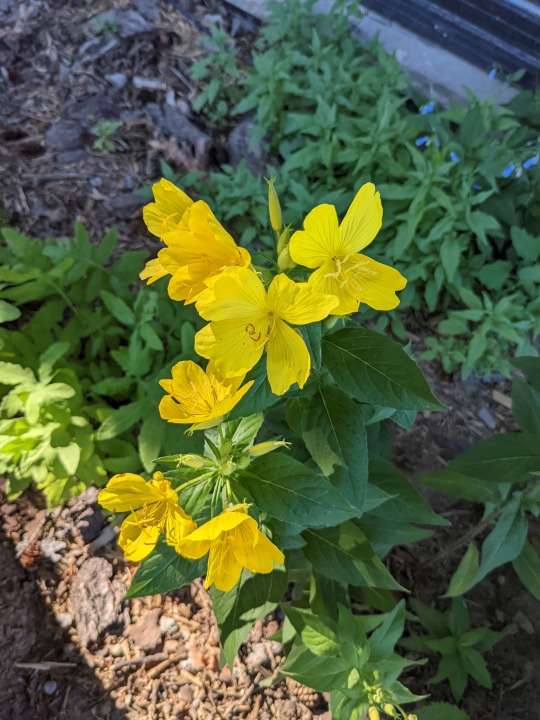
Oenothera fruticosa (narrow-leaved sundrops)

Lilium philadelphicum (wood lily)
And cut off again. lol
17 notes
·
View notes
Text
I have PLONTS!!! :D Not all of them, it happens. But I do still have a chance to get two of them, and I did find purplestem angelica! I have to figure out where to put it, but I'll puzzle that out when I get home. I'm pretty sure I have at least one other order coming pretty soon too, of not this weekend then early next week, possibly two orders. And I wanted to see what I could possibly get as a replacement plant while I was at the plant sale and did find a few so I don't need to add those to any planned orders unless I want to give them more friends. Purplestem angelica, green dragon, Canadian fly honeysuckle! (Second attempts) wild yam, showy tick trefoil, boneset, hairy mountain mint, downy yellow violet, white lettuce, Canada wild rye! (Third attempts) Roundhead bush clover, fireweed! I have them, they are mine! Also got more field thistle because I can't tell if the baby thistles growing are mine that reseeded itself or just more invasive bull/spear thistle. I'll leave those be until I'm sure, but in the mean time I'll plant the new ones. Also plan to plant my seeds this weekend (bigleaf lupine, strawberry spinach, scarlet runner bean, sweet corn) so we'll see how those do. I don't have much luck with seeds though my plants reseed themselves fairly reliably.
11 notes
·
View notes